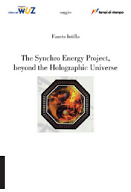A pulse of light injected into a Bose-Einstein Condensate (BEC) can be slowed to a tiny fraction of the speed of light in a vacuum. In the movie, the top animation shows how the information in a pulse is compressed when it enters a BEC (contained inside the blue arc), and then returned to it's original form as it exits. In the movie, the lower animation illustrates a race between a light pulse that passes through a cigar-shaped BEC blob and a light pulse traveling in free space, demonstrating how light can be controlled with BECs. Techniques that slow light could potentially lead to devices that manipulate light in the same way that microelectronic chips and computers manipulate electrical signals and data.Light comes in units of energy called photons which have no mass, only energy and momentum. Modern physics tells us that massless particles must move at the speed c in a vacuum. It's possible to slow light down by making it interact with matter and, in a sense, converting photons to something with mass. That's one way to understand what Lene Hau and colleagues at the Rowland Institute of Science did in 1999 when they slowed light to 17 miles per hour in a Bose Einstein Condensate (BEC) made of ultracold sodium atoms. The BEC is usually opaque, but the researchers made the material transparent by exposing it to a specific arrangement of laser beams. The lasers allowed incoming photons to combine with atoms to form a hybrid particle known as a polariton. Because polaritons get mass from the atoms, they move slower than c. In a BEC, many atoms condense to form one large, super atom. The super atoms are very heavy, and so are the polaritons formed with the incoming photons, and as a result they move much slower than c.In 2001, Ron Walsworth, Mikhail Lukin and colleagues at the Harvard-Smithsonian Center for Astrophysics formed slow moving polaritons in a vapor of rubidium atoms, in much the same way that Hau slowed light in a BEC. By turning down the lasers that made the vapor transparent, the researchers gradually reduced the portion of the polaritons that were made of photons and increased the portion made of atoms, and the light was effectively stopped and stored in the vapor. By turning the lasers back up, the researchers converted the polaritons back into photons, which then resumed their speed-of-light travel. At about the same time that this work was being done, Hau's group stopped light in a BEC.Among other things, stopping light might provide a way to store data in future optical computers, or lead to new ways to manipulate light.
The intelligent heart - The discovery of our second brain.
-
Source: hearthmath.com
------------------------------
Many of the changes in bodily function that occur during the coherence
state revolve around changes...
4 anni fa















Nessun commento:
Posta un commento